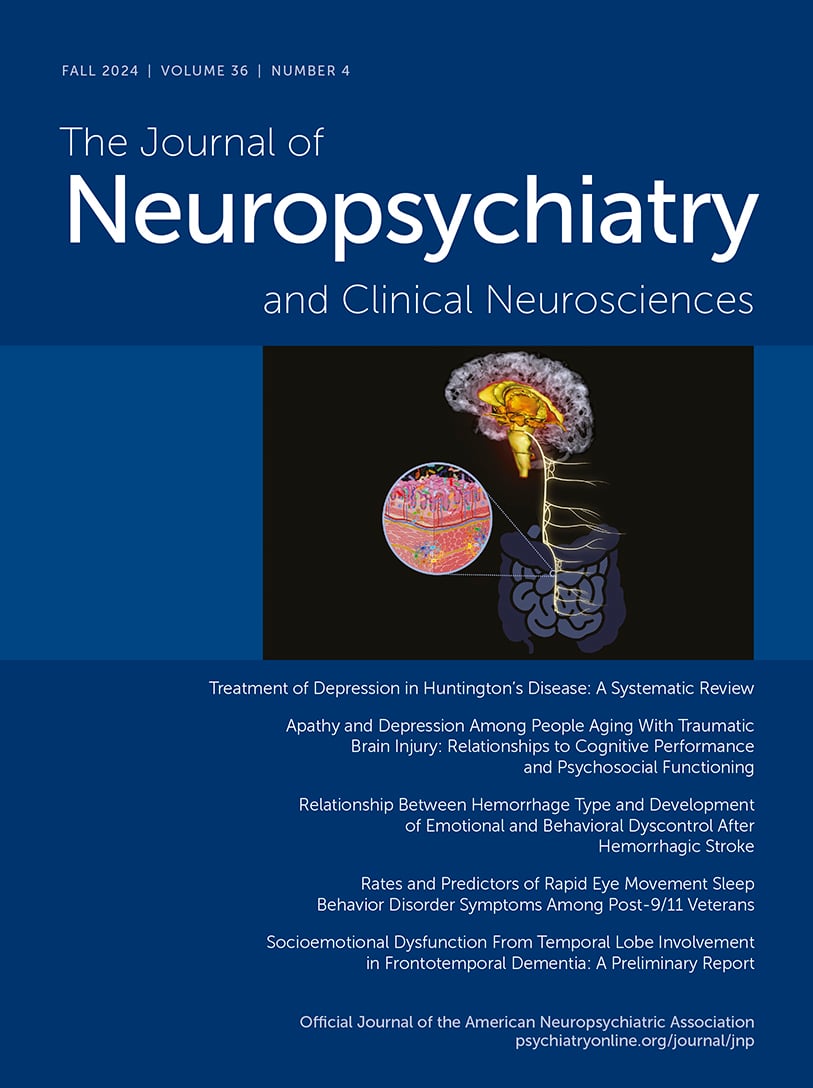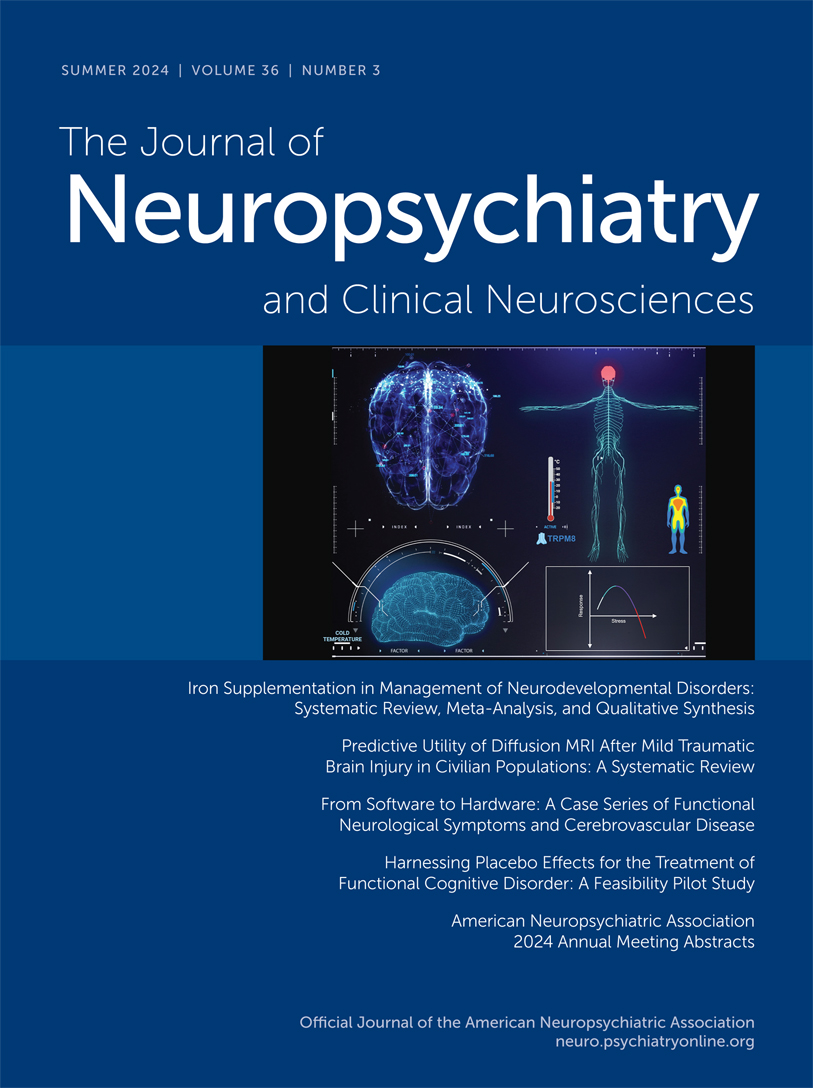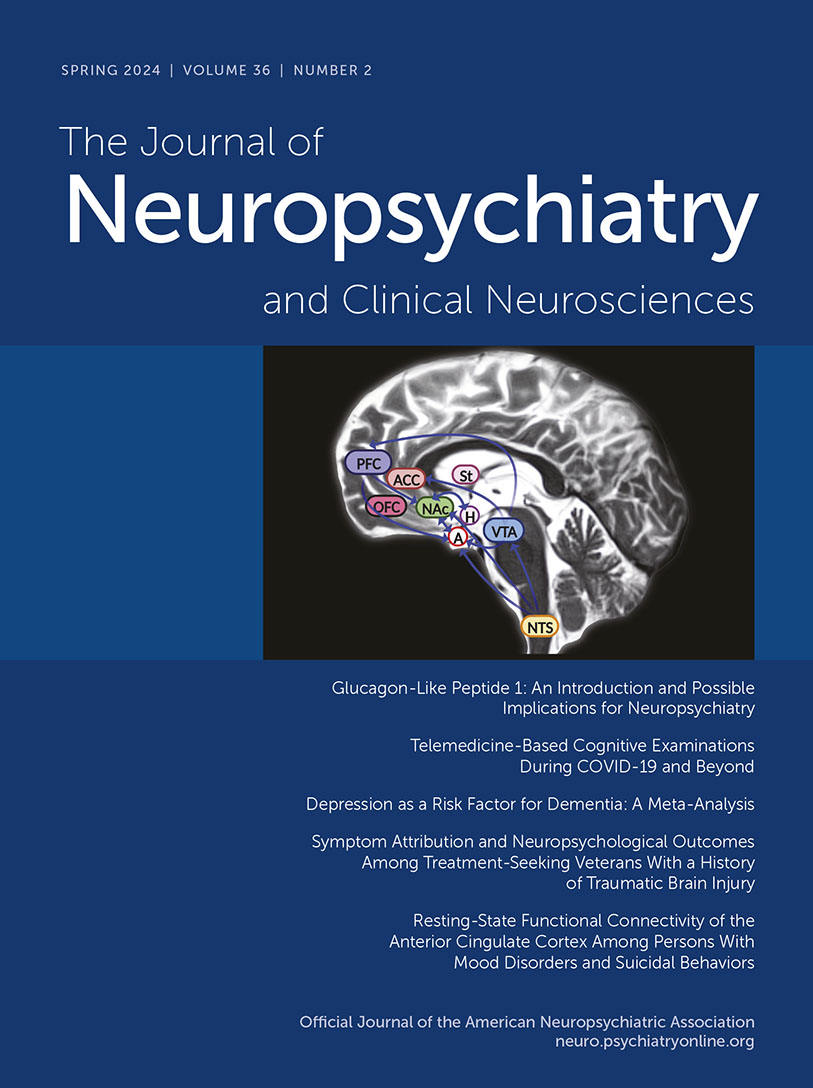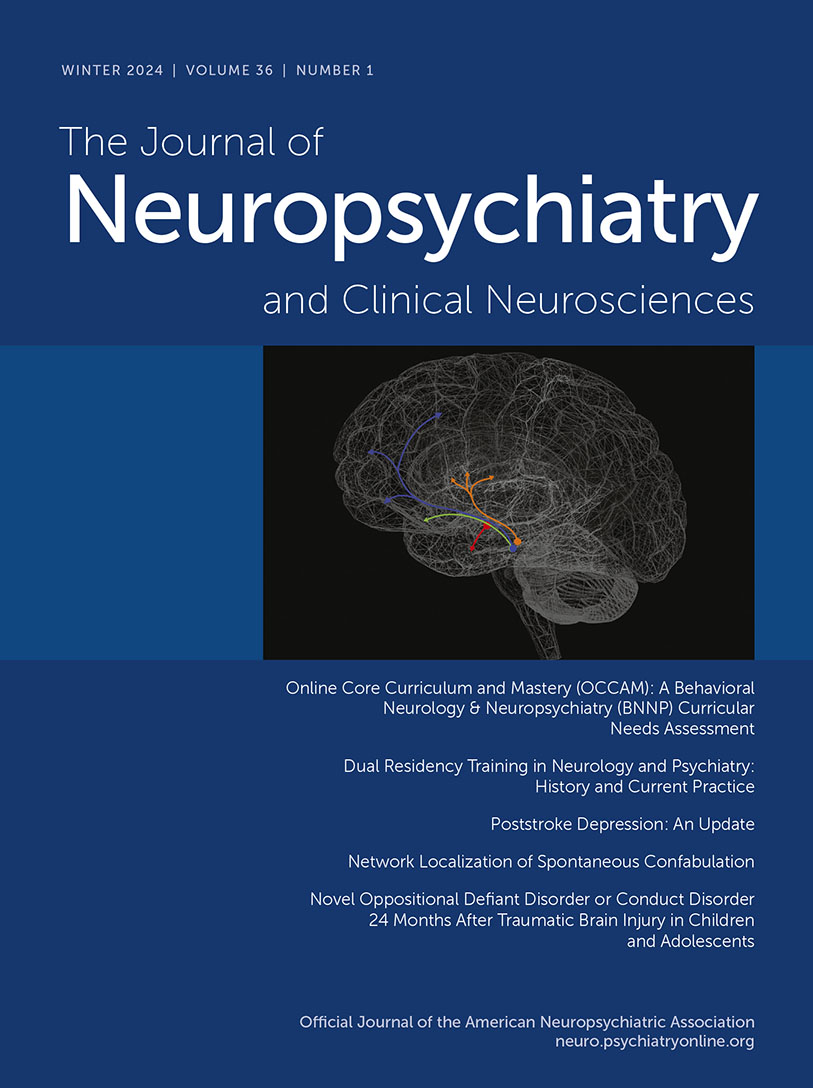The Journal of Neuropsychiatry and Clinical Neurosciences
- Volume 10
- Number 4
- November 1998
Special Article
Publication date: 01 November 1998
Pages373–382Alzheimer's disease is the leading cause of mental impairment in elderly people, accounting for a large proportion of admissions to nursing homes and assisted living homes. Psychiatric symptoms associated with Alzheimer's disease, although common, have ...
https://doi.org/10.1176/jnp.10.4.373Publication date: 01 November 1998
Pages383–394For many years, the structures of the medial temporal lobe have been implicated in the pathogenesis of schizophrenia. Recent hypotheses, based on data from MRI and functional imaging, propose that disruption of frontotemporal neural networks may be an ...
https://doi.org/10.1176/jnp.10.4.383Publication date: 01 November 1998
Pages395–404Of the proliferating approaches to neuropsychiatric assessment, a relatively neglected technique is the venerable, accessible, noninvasive, and inexpensive neurologic examination. This article organizes and synthesizes the literature on neurological ...
https://doi.org/10.1176/jnp.10.4.395Regular Article
Publication date: 01 November 1998
Pages405–412The authors assessed the accuracy of published clinical criteria and their own modifications of those criteria in diagnosing Lewy body disease (LBD). Clinical diagnoses were made by two clinicians, blinded to neuropathologic diagnoses, using the Rochester ...
https://doi.org/10.1176/jnp.10.4.405Publication date: 01 November 1998
Pages413–420The amygdala is thought to be an important neural structure underlying the “fight-or-flight” response, but information on its role in humans is scarce. The clinical and psychophysiological effects of amygdalar destruction were studied in 2 patients who ...
https://doi.org/10.1176/jnp.10.4.413Publication date: 01 November 1998
Pages421–425The authors assessed a consecutive series of 196 patients with probable Alzheimer's disease (AD) for the presence of aggressive behavior, using a standardized neurological, neuropsychiatric, and neuropsychological battery that included both the Overt ...
https://doi.org/10.1176/jnp.10.4.421Publication date: 01 November 1998
Pages426–432Relationships between measures of executive skills and neuropsychiatric and functional status were examined in a group of 31 patients with Alzheimer's disease. Deficits in four executive skills tests were significantly associated with the Agitation/...
https://doi.org/10.1176/jnp.10.4.426Publication date: 01 November 1998
Pages433–439The authors examined 65 patients with Alzheimer's disease for delusions and explored the relationship of delusions with regional cerebral glucose metabolism determined by [18F]fluorodeoxyglucose PET. In patients with delusions (n=26), normalized glucose ...
https://doi.org/10.1176/jnp.10.4.433Publication date: 01 November 1998
Pages440–447Patients with clinical diagnoses of Alzheimer's disease, vascular dementia, or undifferentiated dementia were rated on standardized measures of depression, cognitive impairment, and functional impairment. Logistic regression was used to evaluate the ...
https://doi.org/10.1176/jnp.10.4.440Publication date: 01 November 1998
Pages448–452A sample of 44 patients with a neurological disorder and a DSM-IV diagnosis of Psychosis due to a General Medical Condition were followed on average for 4 years and their response to treatment and clinical course noted. Outcome was more benign than in ...
https://doi.org/10.1176/jnp.10.4.448Clinical and Research Report
Publication date: 01 November 1998
Pages453–455Emotional incontinence (EI) is a perturbing condition characterized by uncontrollable outbursts of exaggerated, involuntary facial expressions and pathological crying or laughter. There is increasing evidence that serotonergic neurotransmission may be ...
https://doi.org/10.1176/jnp.10.4.453Publication date: 01 November 1998
Pages456–458Three patients with neuropathologically confirmed frontotemporal dementia, motor neuron disease type, manifested hallucinations. In this dementia, the superficial layers of the frontal and temporal cortices are predominantly affected. Hallucinations may ...
https://doi.org/10.1176/jnp.10.4.456Neuropsychiatric Practice and Opinion
Book Review
Letter
Past Issues
View Issues Archive
Vol. 36 | No. 4

Vol. 36 | No. 3

Vol. 36 | No. 2
